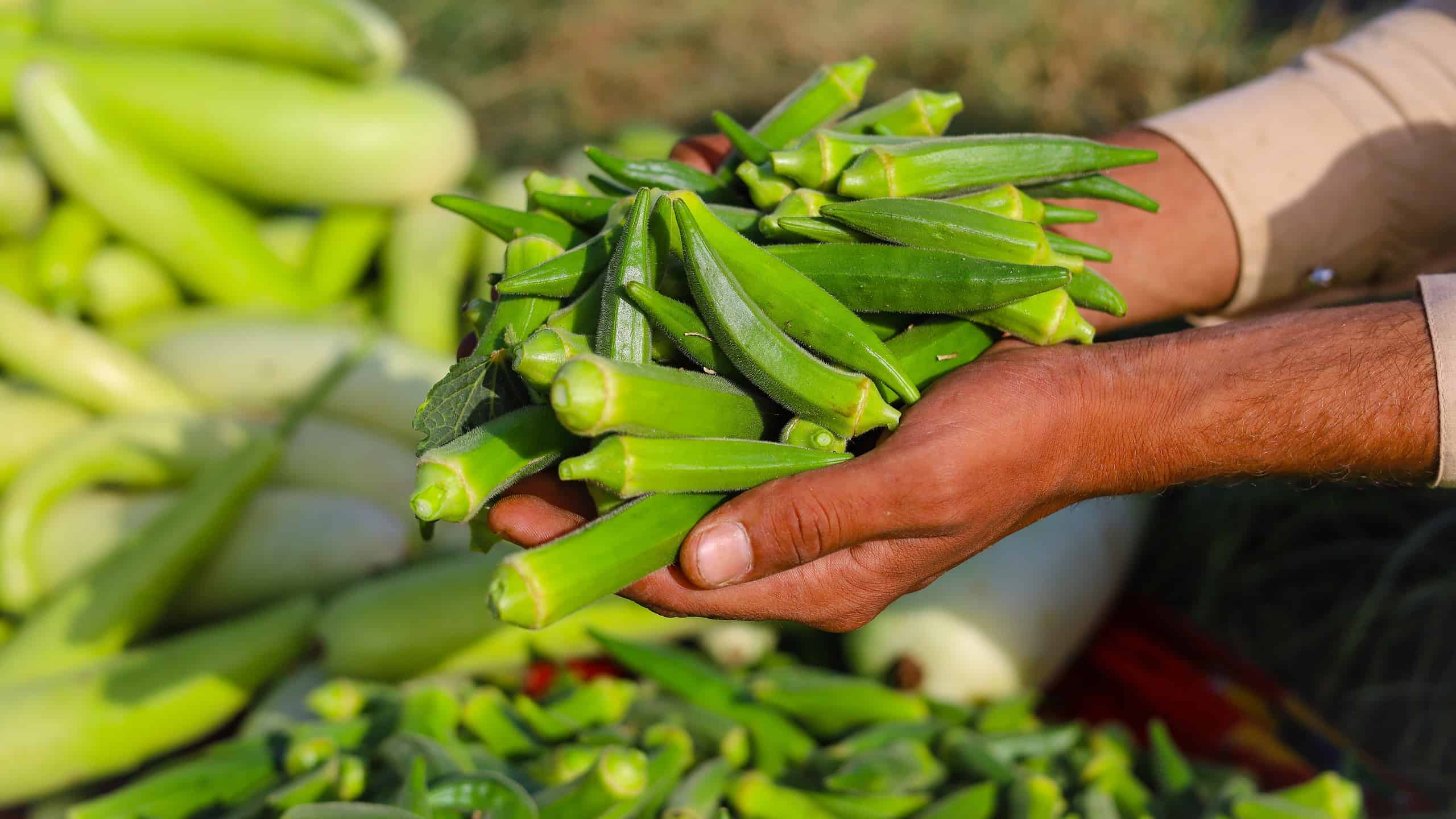If you really want to maximize the space you have in your garden, you have to think about what plants can be planted together. Some combinations of plants are based on traditional knowledge passed on from generation to generation, while others are based on trial and error. Like any other vegetable, okra also benefits from companion planting. With the proper knowledge, you can successfully harvest okra in your home alongside some of your other favorite vegetables and plants.
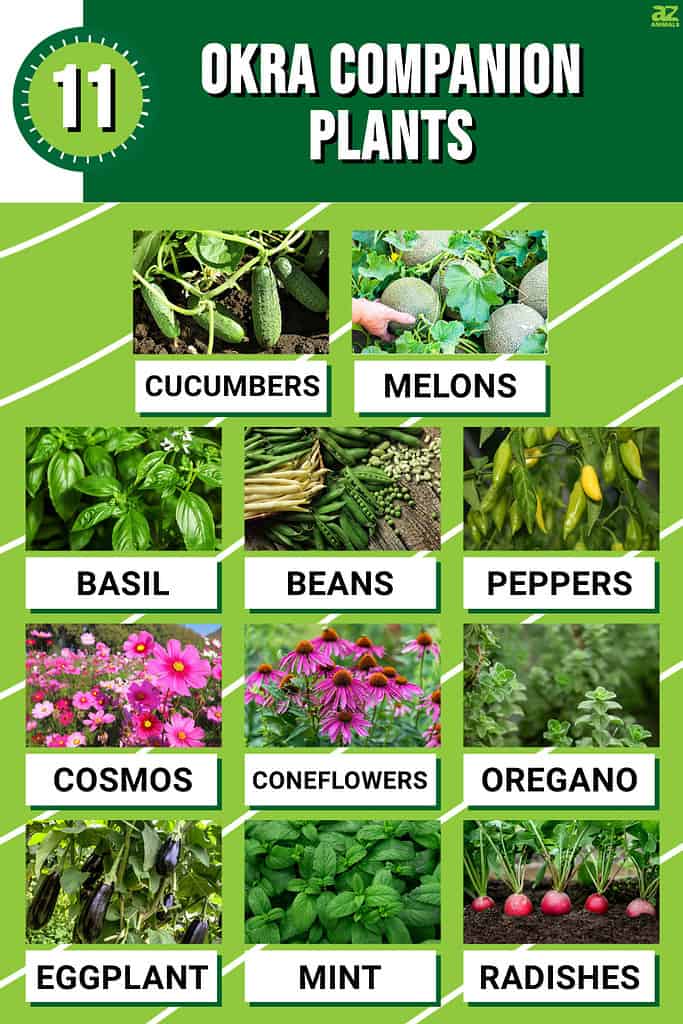
Let’s go over the 11 best okra companion plants together! And we’ll also mention some no-nos that you should avoid planting next to okra at all costs. Let’s get into it!
1. Cucumbers
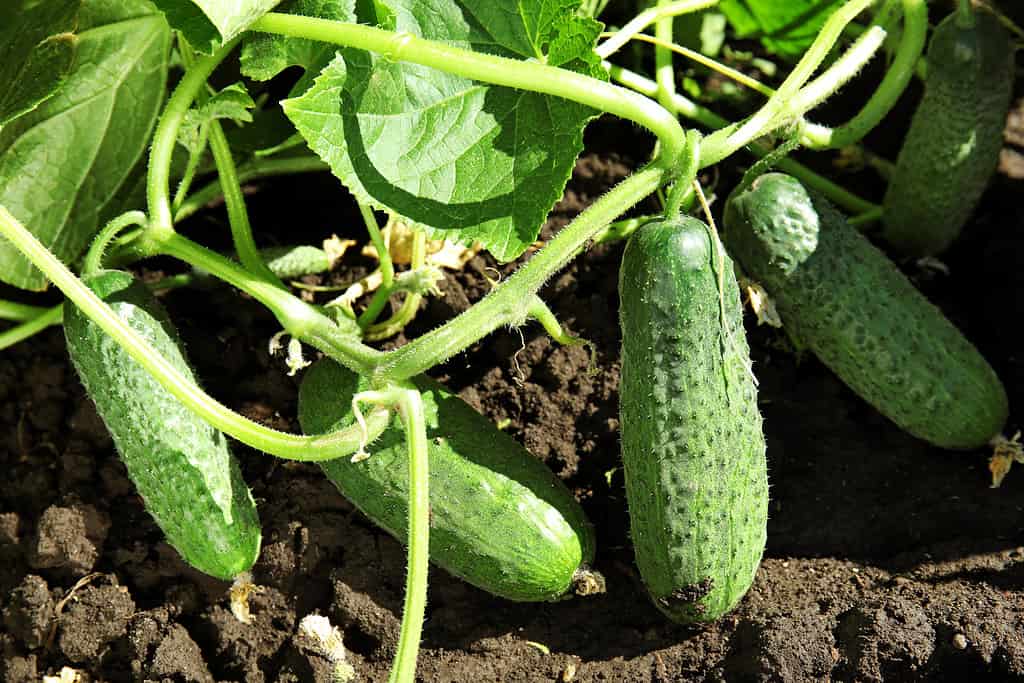
One of the best companion plants for okra is the cucumber.
©New Africa/Shutterstock.com
Cucumbers and okra both need plenty of water, full sun, and rich soil for optimal growth. Due to the exact requirements, you can effectively plant them side by side. Cucumber vines also help the soil retain moisture and prevent weeds from growing around the okra plant.
However, to avoid any detrimental effects, try not to plant them too close to each other.
There should be at least a distance of 6 inches between them to deter any competition between the two plants for resources.
2. Melons
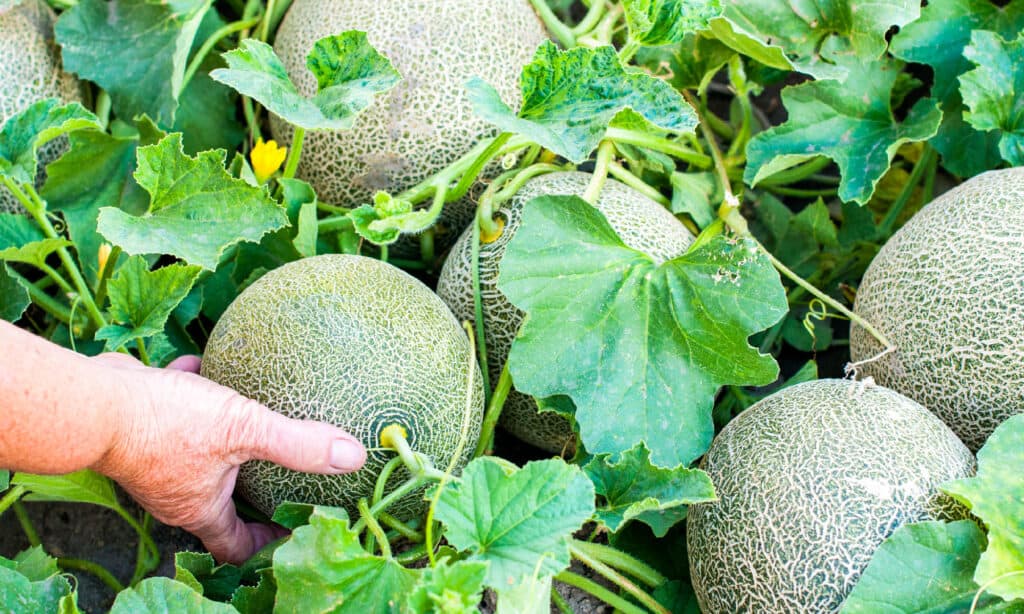
Both melons and okra have similar care requirements, with both needing a lot of sun and water to grow.
©iStock.com/tchara
Melons are considered one of the best companion plants for okra due to the same care requirements. Both require an adequate amount of sun and water to grow. When growing both, make sure to plant accordingly so that the melon can receive adequate morning sun. And since melons grow much lower than okra, you don’t have to worry about this companion plant blocking the sun.
Harvesting melons as a companion plant to okra also creates a living munch to control pests and weeds from growing. The broad leaves of the melons scattered around the soil also help with water retention.
3. Basil
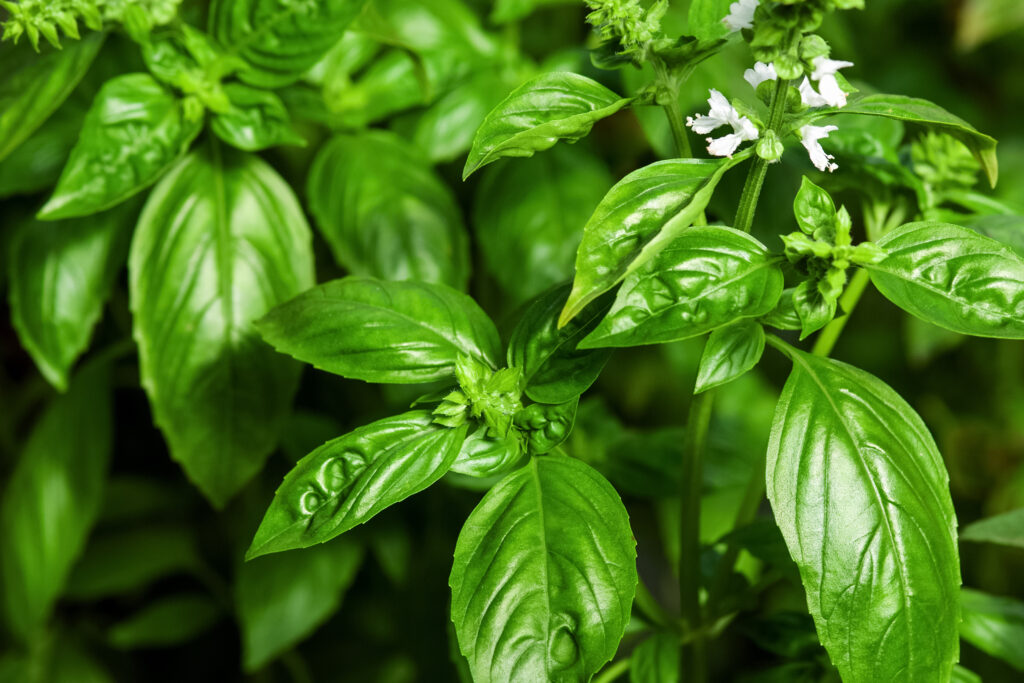
One advantage of planting basil with okra is that many recipes call for both ingredients.
©Nadya So/Shutterstock.com
Another plant that could be beneficial to plant next to okra is basil. If you’ve ever grown okra, you may already know that okra is a hot favorite among pests like aphids, thrips, whiteflies, flea beetles, stinkbugs, spider mites, and caterpillars.
Due to basil’s strong fragrance, planting it with okra can help safeguard your vegetable from these annoying pests. Its fragrance also attracts beneficial insects like bees and butterflies, which are crucial in pollinating okra flowers and increasing fruit production.
These plants also complement each other as basil has shallow roots that do not compete with the deeper roots of okra. This allows both plants to coexist without hindering each other’s growth. In fact, okra’s tall height (up to 6 feet) makes for some great shade for basil to avoid the summer heat.
And as a plus, basil, specifically Thai basil, is a kitchen’s favorite companion for okra — both of which are used in a variety of recipes. So, planting them together makes it easier for you in the kitchen when it’s time to harvest!
4. Beans

Due to their similar care requirements, beans make great companion plants for okra.
©Shulevskyy Volodymyr/Shutterstock.com
Beans are a great companion plant for okra because they both have similar care requirements. They both require direct sunlight for maximum growth. Furthermore, the natural ability of legumes to add nitrogen to the soil may help the plants in its vicinity, including okra. Vining beans love to use okra as a natural trellis, and beans that grow lower on the ground can help shield the soil from the sun and suppress weed growth.
If you plant vining beans, make sure to plant them once the okra reaches 1 foot tall. That way, the new vining beans can use the plant as a living framework for growth. A win-win situation!
5. Peppers

Peppers can protect your okra plant from various pests.
©Wirestock Creators/Shutterstock.com
Planting peppers close to okra is an excellent option, as pepper plants protect the okra from different pests. Peppers contain natural compounds, such as capsaicin, which act as a natural repellent against common garden pests like aphids and spider mites. Capsaicin is especially effective against cabbage worms as well.
In other words, by planting peppers as a companion plant for okra, you can reduce the need for chemical pesticides! If you really want to take advantage of the peppers in your garden, you can even turn them into a natural spray to repel those annoying garden pests!
6. Cosmos

Not only are they beautiful, cosmos flowers can also attract beneficial insects to your garden.
©iStock.com/Passakorn_14
Cosmos flowers are beautiful flowering plants that not only add beauty to your garden but can also attract beneficial pollinators. It’s best to plant cosmos in close proximity to the okra to attract butterflies, bees, and many other beneficial insects. These insects not only help with pollination but can also attack unwanted pests.
As the okra plant is self-pollinating, they do not require any insect to produce pods. However, these pollinators are beneficial anyway, as they can increase pollination rates, thereby enhancing your okra harvest.
Plant cosmos and okra together for an aesthetically pleasing and mutually beneficial relationship between the two plants.
7. Coneflowers
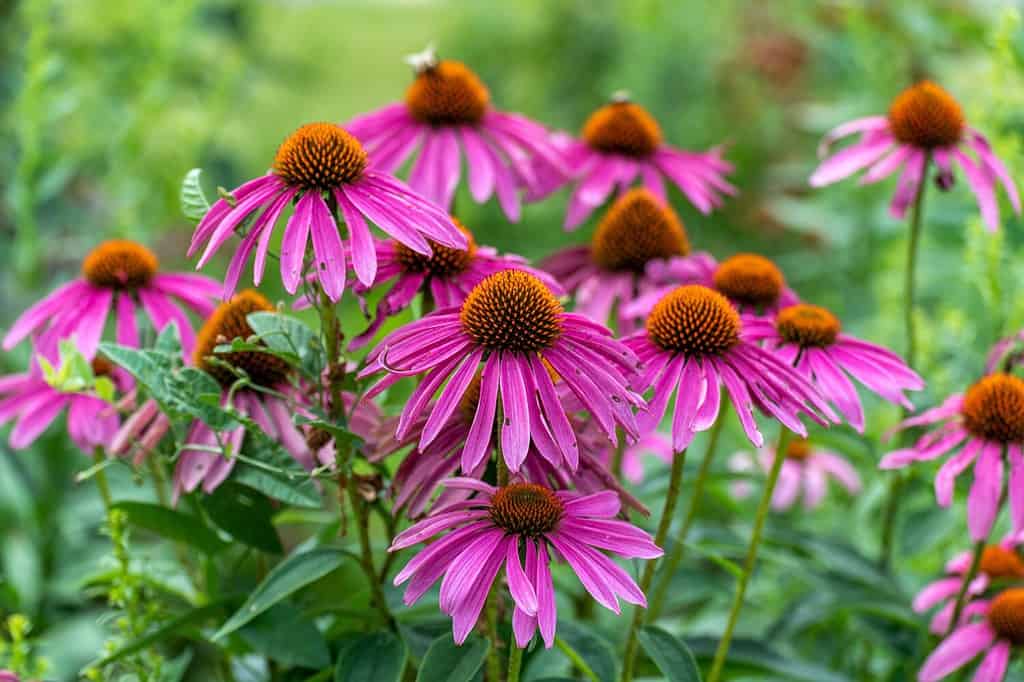
Coneflowers also attract beneficial pollinators that act as natural pesticides.
©Barbara Smits/Shutterstock.com
Another attractive option for a companion plant is the coneflower. These flowers grow throughout the United States. Besides their obvious beauty, another reason you should consider planting coneflowers with okra is that they attract beneficial pollinators. Similar to the cosmos, the coneflower attracts bees and other airborne insects that can increase the pollination rate of okra and help them to grow faster.
Plus, these beneficial insects can act as natural pesticides! Another amazing feature of coneflowers is they are super easy to take care of. So, no need to stress about looking after them.
8. Oregano
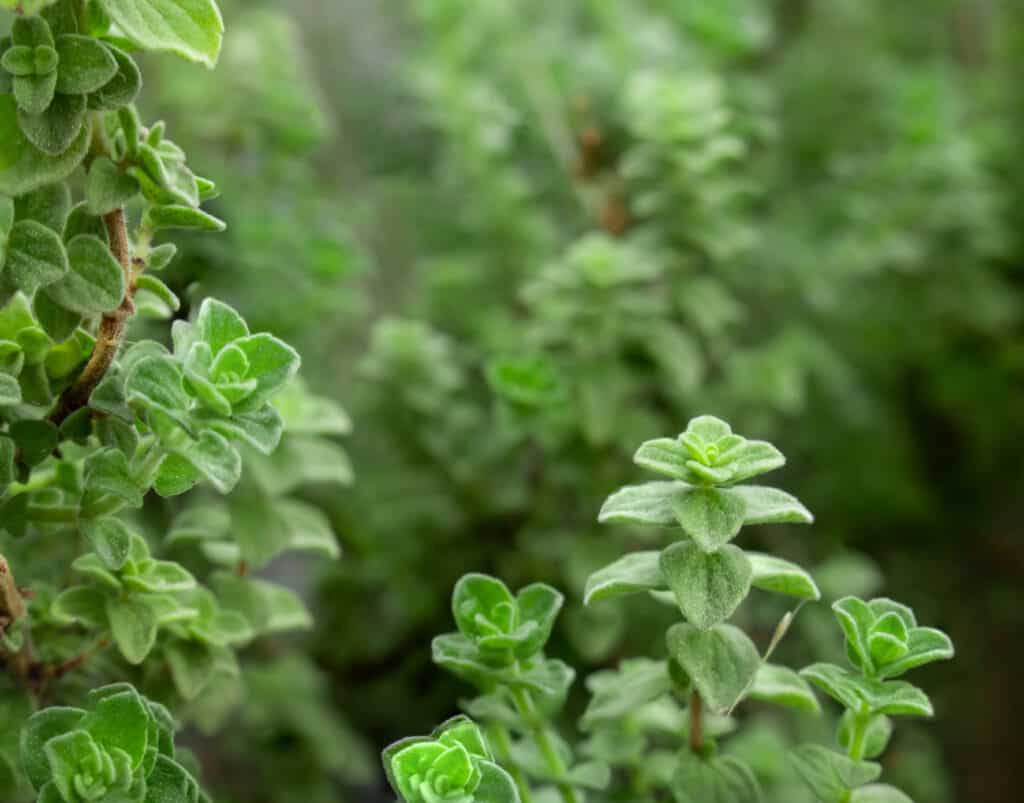
A perennial herb, oregano can help repel pests from the okra plant.
©Artem Kontratiev/Shutterstock.com
Oregano is a perennial herb that thrives in well-drained soil and full sun, making it a suitable companion for okra’s growing conditions. Like basil, the long-lasting aroma of oregano repels unwanted pests and insects from the okra plant and keeps it safe from invaders.
Furthermore, oregano grows low on the ground, so it can act as a living mulch, keeping weeds from growing around the okra and keeping the soil nice and moist.
Since oregano is a perennial and okra is an annual plant, there is a slight issue with the fact that it might be difficult to pull out the okra at the end of the season without damaging the oregano. But you can easily bypass this issue by either planting too much oregano in the first place or potting up the oregano plant.
9. Eggplant
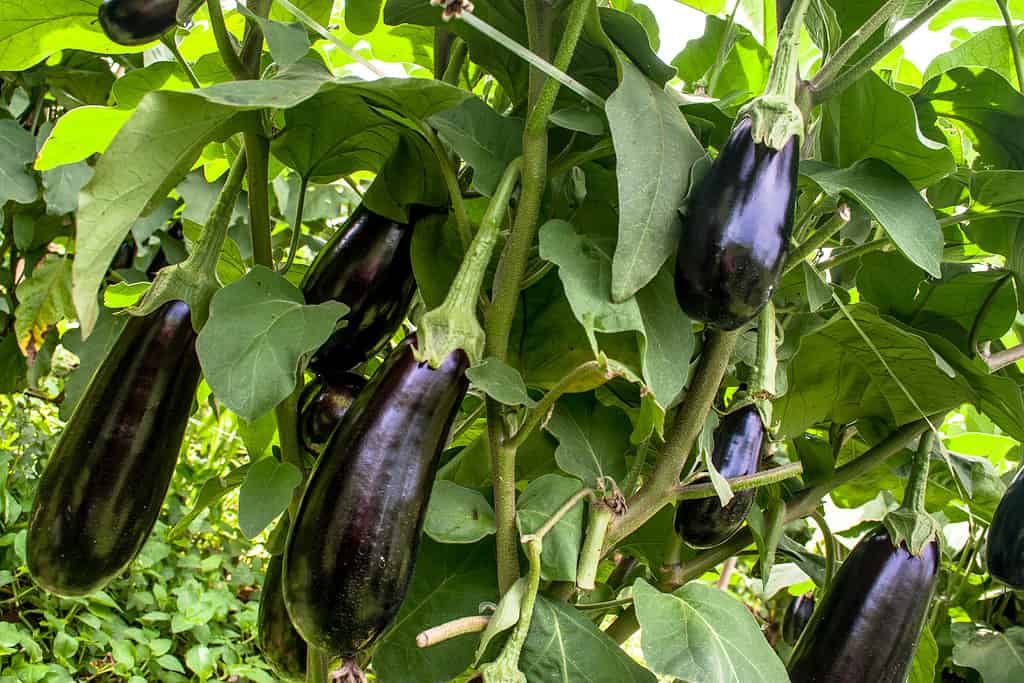
Another beneficial companion plant for okra is eggplant.
©Alf Ribeiro/Shutterstock.com
Eggplant is a warm-season vegetable that can significantly benefit okra with companion planting. The best thing about eggplant is that it provides potassium to the soil. Potassium is essential for the okra plant to make it resistant to fusarium wilt, a fungal disease.
Okra is also beneficial for eggplant in this relationship. Their tall structure can provide some much-needed shade for the eggplant. Furthermore, both the okra and eggplant have similar water needs, so it makes sense to plant them together!
10. Mint
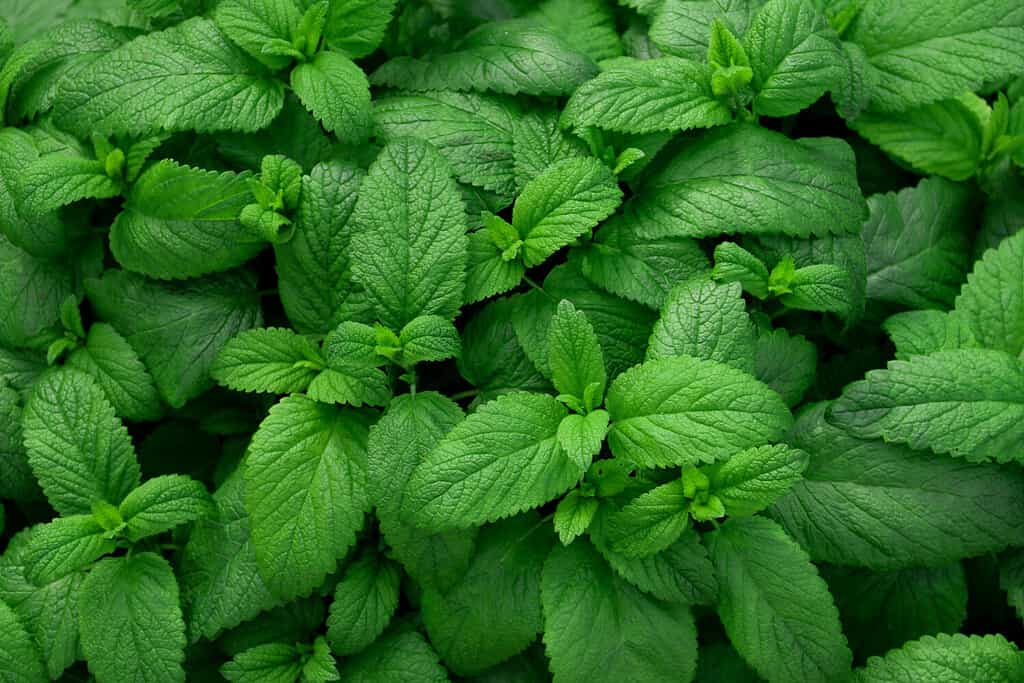
The smell of the mint plant will help keep pests away from your okra.
©Olesya Myzzz/Shutterstock.com
Mint is another great option to plant with okra. But remember to keep an eye on mint as it spreads too fast. Mint tends to spread and form a dense ground cover preventing weed growth.
Like other aromatic plants, mint’s aroma will not be pleasant for pests like spiders, cabbage moths, mites, and many other harmful insects. By planting mint and okra together, you create a natural barrier that helps protect the okra from these pests, reducing the risk of infestations and damage.
On the other hand, when flowering, mint can attract beneficial insects to the garden. Many beneficial insects, such as ladybugs and lacewings, are attracted to the mint flowers. These beneficial insects prey on harmful pests, providing further natural pest control for your garden.
11. Radishes

There are many benefits to planting radishes with your okra.
©Natallia Ploskaya/Shutterstock.com
Another surprising companion plant for the okra is radishes. Radishes are fast-growing plants with deep taproots. As they grow, the radishes can help break up compacted soil and improve its structure. The radish roots penetrate the soil deeply, creating channels for air, water, and nutrients to reach the roots of neighboring plants like okra. This improved soil structure can benefit the growth and overall health of the okra plants.
Moreover, okra and radishes have different growth rates and harvest times. Radishes are quick-growing and can be harvested within a few weeks, while okra takes longer to mature. By interplanting radishes with okra, you can make the most of the garden space and harvest radishes while waiting for the okra plants to develop.
Plants to Avoid Planting Near Okra
As you can see, there is a variety of different plants that work as companion plants for okra. However, on the flip side, there are some plants that you should absolutely avoid planting near okra. Let’s go over these together before you make a grave mistake!
1. Tomatoes
Tomatoes are everyone’s favorite garden product, but in this case, it is not recommended to grow them with your okra. The biggest problem is that tomatoes can attract a number of pests that can damage your okra crop. Furthermore, tomatoes are prone to many diseases that can spread to okra.
2. Potatoes
Another bad option as a companion plant for okra is potatoes. Planting potatoes can lead to nematodes in your soil. Although, in some cases, nematodes can be beneficial, these tiny creatures actually like to feed on okra. So, the presence of nematodes will do more damage than good.
3. Squash
Planting squash or other vine crops as a companion to the okra is also a bad idea, as it will welcome all the root nematodes in the growing soil that will eventually feed on and damage your okra plant.
4. Fruit Trees
Try to avoid planting any type of tree, including fruit trees, next to okra. The okra plant requires a sufficient amount of sun to grow and produce fruit. And, of course, a tree, as a nearby companion, will obstruct the sun from reaching okra, hindering its growth.
Summary of the Best Okra Companion Plants
| Plant | Benefits to Okra Plant | |
|---|---|---|
| 1. | Cucumber | Similar growth requirements |
| 2. | Melons | Similar care requirements |
| 3. | Basil | Repels pests and attracts pollinators |
| 4. | Beans | Similar care requirements and adds nitrogen to the soil |
| 5. | Peppers | Repels pests and reduces pesticide use |
| 6. | Cosmos | Attracts beneficial insects for pollination |
| 7. | Coneflowers | Attracts beneficial insects for pollination |
| 8. | Oregano | Repels pests, prevents weed growth, and keeps the soil moist |
| 9. | Eggplant | Provides potassium to soil and similar watering needs |
| 10. | Mint | Repels pests, attracts beneficial insects, and prevents weed growth |
| 11. | Radishes | Improves soil structure |
Thank you for reading! Have some feedback for us? Contact the AZ Animals editorial team.

